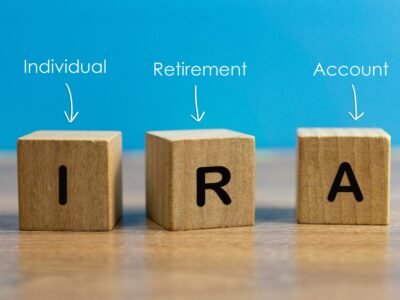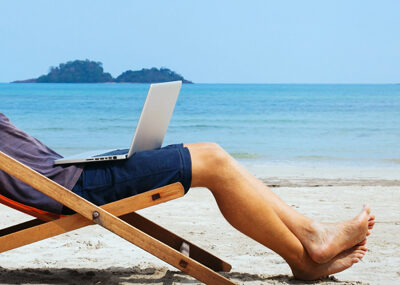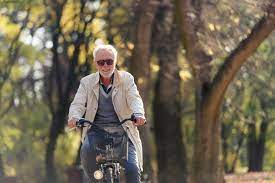How to start saving for retirement in your 40s
You’ve made it to your 40s. Here’s how your saving for retirement strategy changes:
In your 40s, you’re probably at the midpoint for retirement at 65, having working for 10-20 years already depending on how much school you signed up for. Hopefully you’ve had a pretty good nest egg that’s been growing. In your 40s, you still want to put a good amount away for retirement, while accounting for future costs in between now til retirement. Those higher costs can be health bills or kids going to college. Starting to plan for that earlier will help you. More on that later in this post.
Where others might be in their 40s
People often want to know where they stand against others, it doesn’t matter as much, as long as you’re covered for retirement when you choose to stop working. But often times, it’s you might have an interest in knowing where you stand. According to this source, Vanguard 401(k) data, 2019, people getting close or in their early 40s have roughly around ~$70k while in their late 40s moving to the next digits, they have a bit over ~$130k.
Age 35 to 44
- Average 401(k) account balance: $72,578
- Average 401(k) savings rate: 6.6%
Age 45 to 54
- Average 401(k) account balance: $135,777
- Average 401(k) savings rate: 7.3%
I would note that you should consult with your financial advisor or look at your specific needs to determine how much you should have or need by the time you retire. I often leverage Vanguards retirement calculator to give me a rough estimate on needs. Take a look at how much you believe you need to cover costs and the lifestyle you plan on having in retirement. It helps determine the big question, what percentage of your current income will you need for retirement.
Unlike your 20s and 30s, you probably know yourself a lot better know and have an idea of how you’d like to spend retirement.
40s are a time to fine-tune your investment strategy.
What it really means to be in the midpoint is that you’re starting to have less time to grow your portfolio – and hopefully you’d have some money placed in the right investments so you can still take advantage what’s with the time that’s left. You probably have less than 25 years of compound interest left.
Here are several areas you should look at as your save for retirement in your 40s:
Area 1: Beef up that emergency fund.
You might be responsible for more people than you were in the past. Make sure you have 6-12 months of emergency savings. Keep it in a safe place like a money market or CD, or yield savings account
Area 2: Make sure you keep your debt low
Besides the mortgage you might have on your house – try to keep debt around credit cards to a minimum. Credit card debt accounts for roughly 20%+ of annual interest per year, those are the things that can zap away your savings or monthly paycheck. Hopefully you have your student loans in control or a path where you’re on track to pay them off. If not, consider refinancing those student loans with a personal loan or bank that provides great rates, hopefully under 2-3% as government student loan debt is roughly 6%+. Private banks often have great deals.
Area 3: Keep the momentum of boosting or max contributing to your 401k and/or IRA
In your 30s, it was good to begin growing your retirement savings every year. Often times, people do this by automatically investing per pay check and increase that amount about 1% per year. So if you contributed 7% of your gross paycheck last year, your automatic savings account might adjust to 8%. However, I would say 15% of your gross income should be going to your retirement amount until you can max contribute.
Area 4: Open other investment accounts beyond your retirement accounts
Look into more investment choices beyond retirement accounts – this will protect your retirement nest egg from yourself, the temptation to dip into it when your costs begin to increase in your 40s. For example, if you have kids, you can expect to spend a substantial amount on them throughout their lifetime. Some of the biggest things to consider is their college education, or if they get married themselves. It’s good to begin consider a 529 account. An account used to invest money for your children’s college, or other education expenses. Here’s a nice site (savingforcollege.com) that tells you more about that.
There are more investments you can do to keep your funds contributing back to you. If you are into real estate or want to put some money in it, consider crowdsourced real estate like Fundrise or Crowdstreet.
If you have an Individual brokerage accounts, send some of those extra dollars that you might not need per month into this account and let it grow. You can pull from this taxable account rather than dip into your retirement account.
Lastly, if you are a stock investor, always be prepared for risk, but in your 40s, you still have 25 years of investment growth to play with. It might be important to keep more in stock funds than bonds, but as you get closer to 15 years before retirement, this is when you should consider reducing your exposure to stock and move more towards safer investments like Bonds.
This is all personal finance, so determining how much risk you want to take and your retirement needs will help you define this. As always, seek our a financial advisor or professional with your bank. Often times, this counseling is free service.
Area 5: Get a holistic view of where you money goes
A command center. It will also allow you to see all of your bank accounts, investment accounts, and revolving credit lines. One of the more popular ones is Personal Capital or Mint.com. The benefit of setting up a command center is to get a full picture of where money is coming in and coming out. This will let you determine and keep a pulse on your net work as well as seeing your investment mix. In your 40s, you might have more types of investment funds ranging from individual stocks across different industries, mutual funds, ETFs, bonds, even higher risk ones like Crytocurrency. This large view will also let you know if you need to rebalance your overall portfolio.
Keep saving, and plan ahead will help you be setup for success and enjoy life in the moment.









